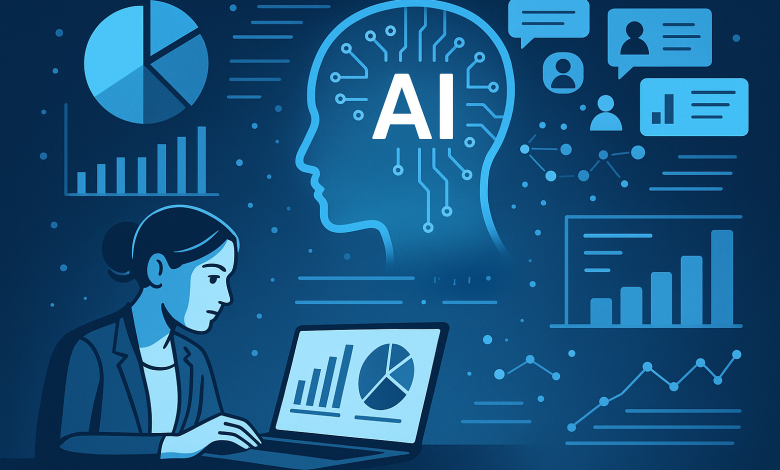
Qualitative data has always held immense value for research and marketing teams. The nuance of open-ended responses often reveals the “why” behind consumer attitudes and behaviors or critical insights into consumer paint points. Yet until now, it has been difficult to analyze this kind of data efficiently and reliably at scale.
The Analysis Bottleneck
For decades, the process of analyzing qualitative data has been painfully slow. Research workflows relied on manual coding of open-ended responses. That meant analysts would read through thousands of free-text answers, classifying them by hand into categories.
This method had two major drawbacks. First, it was very time consuming when coding several open-end responses, often stretching reporting cycles from days to weeks. By the time findings reached decision-makers, market conditions might already have changed. Second, it introduced subjectivity. Different coders could interpret answers differently, leading to inconsistency and reducing trust in the results.
Open-ended responses are especially critical. They contain rich detail and emotional context, providing insight into motivations that quantitative multiple-choice questions can’t capture. But because they are difficult to understand and digest, this type of data often gets underutilized. Insights that could have reshaped a campaign or product launch are lost in the noise or arrive too late to matter.
AI as a Core Capability
This is where artificial intelligence is transforming market research. Advances in natural language processing (NLP) allow open-text survey responses to be clustered, summarized, coded and reported on in minutes, improving quality, reducing project time, all while reducing costs and eliminating analyst fatigue and burnout.
Machine learning models can now scan thousands of responses to identify recurring themes, sentiments, and contextual signals. They can highlight subtle patterns that human analysts might miss, while also ensuring that analysis is consistent across time and across studies.
Crucially, these tools enable researchers to merge structured data (like demographics or multiple-choice survey answers) with unstructured responses and even behavioral signals. The result is a much more complete picture of consumer behavior — not just what people say they do, but why they feel the way they do.
Beyond speed and automation, one of AI’s most important strengths is its ability to understand context. These systems can be trained on sector-specific language, customer behaviors, and business priorities so they don’t just process responses — they grasp meaning, spot emerging themes, and interpret feedback through an industry-aware lens. This makes analysis not only faster but smarter, giving teams insights that align with how their market actually works.
Practical Impact for Research Teams
The practical implications are dramatic. Analysis cycles that once stretched across weeks can now be completed in minutes. This means businesses can act on research findings while conditions remain current, rather than retroactively adjusting strategies to a market that has already shifted.
AI-driven analysis also eliminates the need for selective sampling. Every single response can be taken into account, ensuring that important outliers or minority opinions are not excluded simply to save time. This is especially important when small but influential consumer segments might provide the early signals of a larger trend.
Consistency is another major gain. With standardized criteria and models, results are reproducible across studies and over time. This makes it easier to benchmark shifts in sentiment or compare campaigns in a way that isn’t clouded by inconsistent human coding.
For researchers themselves, the benefits go beyond efficiency. Instead of spending hours on data handling, they can focus their expertise on guiding interpretation, telling the story behind the numbers, and shaping strategy. In short, AI does the heavy lifting, while human insight directs the action.
Looking Ahead
As AI continues to improve, the competitive differentiation in market research will increasingly come down to time-to-insight and quality. The organizations that thrive will be those that can move from data collection to actionable insights the fastest, without sacrificing reliability.
Those that integrate AI into their research workflows will no longer depend on static, periodic snapshots of consumer attitudes. Instead, they’ll operate with a continuous stream of validated feedback, updating in near real time. This agility positions market research as a central, responsive function that aligns directly with the pace of modern business decision-making.
In practical terms, this shift changes the role of research from a supporting activity to a core driver of strategy. Faster cycles mean marketing teams can iterate campaigns in flight. Product teams can test and refine features continuously. Executives can make decisions with confidence that their inputs are not weeks old, but hours old.
Conclusion
The defining advantage for tomorrow’s research leaders will be the ability to generate reliable insights at speed and scale. AI-powered analysis provides that foundation, ensuring market research remains indispensable to how organizations understand, anticipate, and respond to consumer needs.
By reducing bottlenecks, expanding inclusion, and delivering consistency, AI is not only making qualitative analysis possible at scale, it’s redefining the entire function of research. The organizations that adapt quickly will find themselves operating with unprecedented agility, while those that cling to traditional methods will risk being left behind.
Fast, reliable analysis is no longer a “nice to have.” It is the future of market research.





